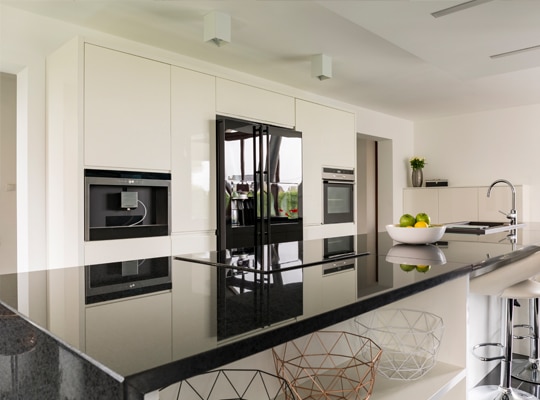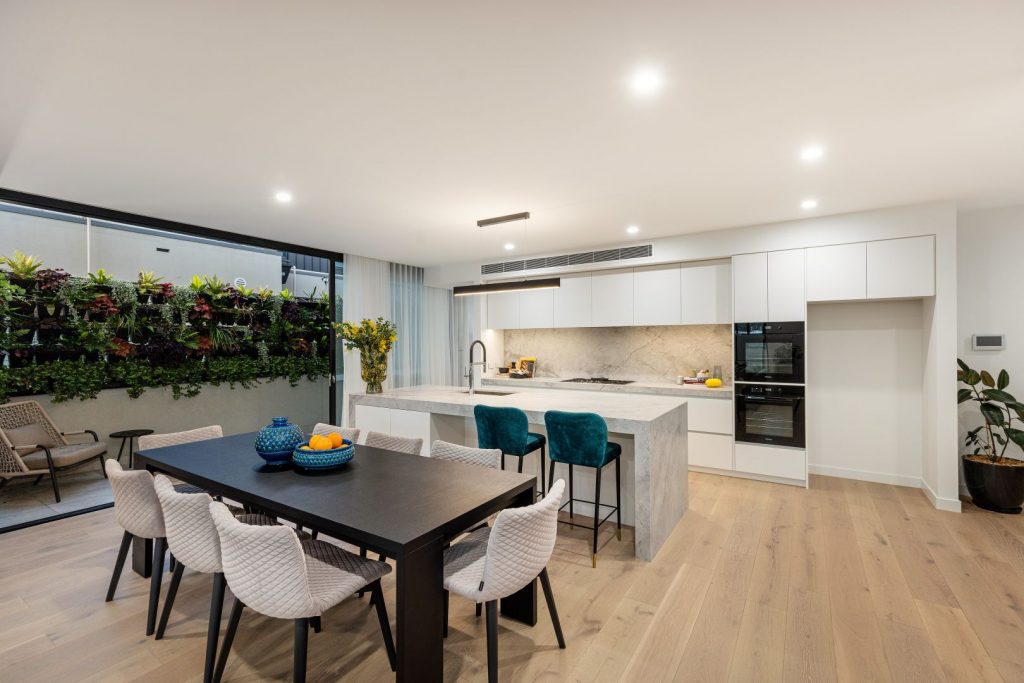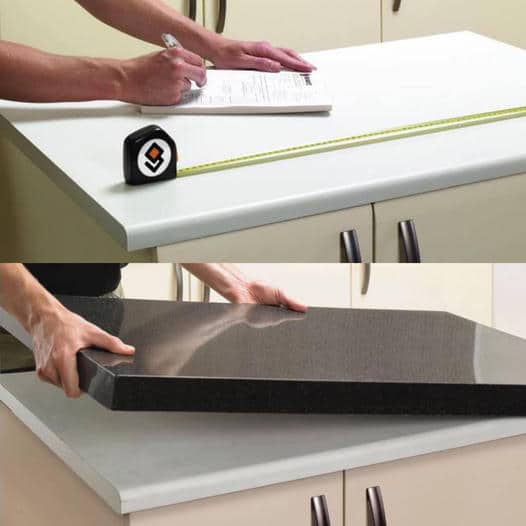A home’s heart is usually the kitchen, and its most impactful modification, far beyond visual appeal, would be the kitchen benchtop replacement of an outdated or damaged benchtop. Whether you are preparing meals, hosting guests, or just brewing a morning coffee, a new benchtop can enhance the aesthetics and functionality of your space. The cost to replace a kitchen benchtop can vary widely, depending on the material used and also on the size and complexity of installation.
This blog will examine all the different factors that influence you to replace kitchen benchtops; it will give you an overview of popular materials available and their price range and help you decide whether to do it yourself or call in a professional.
Factors Affecting the Replacement Cost of a Kitchen Benchtop
When calculating the cost to replace a kitchen benchtop, there are several factors at play that we need to include and consider:
- Material Type: The type of material selected for the benchtop is the most significant cost influencer. There are premium materials like marble and granite which work best both in terms of usage and aesthetics.
- Size and Shape of the Benchtop: A larger benchtop with more elaborate designs or shapes is obviously going to cost more. A standard benchtop is cheaper to replace than one that has intricate designs or sharp curves.
- Labour Costs: High labour costs are widespread for professional installation, especially if the installation process is complex. Specialised design or even the installation of sinks and built-in appliances add to the labour.
- Additional Features: If your project includes unique features like an inbuilt sink, splashback, or under-bench lighting, you also have to add those costs to your total project expenditure.
Each of these will affect the overall price, so take the time to plan your budget effectively.
Standard Kitchen Benchtop Materials and Their Costs
While aesthetics play a huge role in the choice of material for the kitchen benchtop, it is influenced by how much one is willing to spend and the maintenance one wants to commit to. Here’s a breakdown of some of the common kitchen benchtop materials.
- Laminate (budget-friendly): Laminate benchtops are budget-friendly, but they provide you with a great variety of styles and finishes. They are estimated to cost between $100 and $400 per square metre.
- Granite and Marble (luxurious): Granite and marble are in great demand as natural stone materials for an elegant and high-end ambience. Depending on their quality and design, their price range can be from $700 up to $2,000 per square metre.
- Timber (natural look, mid-range to premium): Timber benchtops have a warm and natural look that costs between $500 and $1,500 per square metre. The cost depends on the actual category of the wood and its finish.
Each material has its pros and cons and depends on what you like and what your budget is.
DIY vs Professional Installation: What’s the Best Option?
Kitchen benchtop fitting is a major decision, but one of the most complex choices is whether to do the job yourself or hire someone else.
- DIY Installation: A self-installation will save you from labour costs. However, this exercise requires much more skill, specialised planning, and proper implementation. It is more than making accurate measurements of your work. Mistakes like wrong cuts and poor installation can cost you an arm or a leg.
- Professional Installation: Professional installation comes at a cost, but it will ensure the proper installation of your benchtop to a high standard. Professionals are experienced in managing complicated installations that require certain specific techniques and engineering knowledge, which reduces errors.
While DIY might be appealing, the savings must be weighed against the risks associated with it, such as damaging expensive materials or improper fitting.
The Process for Replacing a Kitchen Benchtop
Here are some of the major steps involved in how to replace a kitchen benchtop:
- Initial Measure and Quotes: Take some measurements of your old benchtop and get a few quotes from suppliers and installers. They will usually give you a clear idea of the total cost. The total cost includes the cost of materials, as well as the labour associated with the installation.
- Material Choice: Select a material best suited to your personal style, budget, and functional requirements. Your chosen material will also address questions about durability and maintenance while offering the perfect appeal that will contribute to the overall design of your kitchen.
- Removal of Old Benchtop: Removal of the old benchtop must be carried out before the new benchtop has to be installed. This step requires much more care so that the cabinets and the plumbing system are not damaged.
- Installing the New Benchtop: After removing the old benchtop, installing the new benchtop needs to be cut and finished to the required measurements to fit into position. One requires skill input, especially where heavy materials are concerned, as is the case with stone or marble.
- Finishing Touches: At this stage, additional finishing features such as vessel sinks, splashbacks, wall under-mounts or benchtop edging might be installed. Finally, the benchtop is polished or sealed and ready for installation.
Kitchen Benchtop Replacement Costs in 2025 for an Average Australian Home
The estimated average cost to replace a kitchen benchtop in 2025 will range between $1,200 and $4,500, depending on the sort of material used and the complexity of the installation. For example, the kitchen benchtops in the Melbourne metropolitan area will cost $200 to $500 in labour, but the material price will depend on the existing trends, such as supply chain disruptions and material shortages.
For those who want to take leverage at a top-of-the-range material, like marble or granite, the costs will run up to more than $5,000, but laminate or similar budget-friendly materials will easily fall well under $2,000.
How to Choose a Suitable Kitchen Benchtop for Your Home
A kitchen benchtop replacement needs to serve not only for aesthetics but also functionality. Here are a few key points.
- Maintenance: Some materials, such as natural stone, require periodic sealing and maintenance. On the other hand, the material laminate requires a lot less maintenance compared to other materials.
- Durability: Choose a material that can withstand the tough situation of daily exposure to cooking, especially if you have family members who cook frequently and the benchtop is continuously in use.
- Aesthetic Appeal: Consider how the benchtop fits into the general interior design of your kitchen and whether or not it will complement well with cabinetry and flooring.
- Budget: You should make sure that your chosen kitchen benchtop price, type and size fit within the budget. So, keep in mind both the material cost and installation of the benchtop.
Conclusion: Plan Your Kitchen Benchtop Today
Changing your kitchen benchtop is a thrilling chance to breathe fresh life into your kitchen aesthetic and home interior. Careful planning will produce the best possible results whether you seek a simple refresh or a total kitchen renovation. Get quotes from professionals, compare materials, and go ahead with a benchtop that upgrades not just the functionality but also the value of your kitchen.
Thus, consult experts who will guide you through each step of the installation process, making it seamless, professional, and durable long after. By keeping all these factors in mind, you will achieve successful kitchen benchtop replacement costs in 2025.









